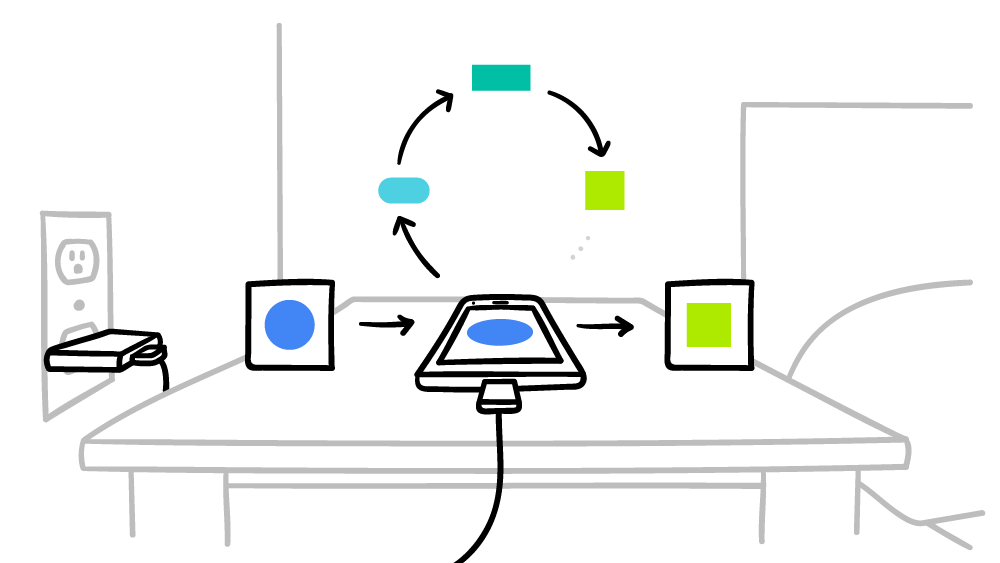Federated Learning: Revolutionizing AI Without Compromising Privacy
In today's data-driven world, the demand for powerful AI models continues to grow exponentially. However, this growth comes with a significant challenge: how do we train sophisticated machine learning models while respecting user privacy and data sovereignty? Enter Federated Learning (FL) - a revolutionary approach that's changing the game.
What is Federated Learning?
Federated Learning is a machine learning paradigm that enables model training across multiple decentralized devices or servers holding local data samples, without exchanging the data samples themselves. Instead of centralizing data in one location, FL allows models to be trained collaboratively while keeping the raw data distributed.
The Core Principle
The fundamental idea behind federated learning is simple yet powerful:
- Local Training: Each participant trains a model on their local data
- Model Aggregation: Only the model updates (not the raw data) are shared
- Global Model: A central server aggregates these updates to create an improved global model
- Distribution: The improved model is sent back to participants for the next round
This process repeats iteratively until the model converges to a satisfactory performance level.
Why Federated Learning Matters
Privacy Preservation
Traditional machine learning approaches require data to be centralized, which poses significant privacy risks:
- Data Breaches: Centralized data repositories are attractive targets for cyberattacks
- Regulatory Compliance: GDPR, CCPA, and other privacy regulations make data sharing complex
- User Trust: Users are increasingly concerned about how their data is used
Federated learning addresses these concerns by keeping data local while still enabling collaborative learning.
Real-World Applications
Federated learning is already making waves across various industries:
Healthcare
- Medical Imaging: Hospitals can collaborate on diagnostic models without sharing patient data
- Drug Discovery: Pharmaceutical companies can pool insights while protecting proprietary research
- Clinical Trials: Multi-site trials can share learnings while maintaining patient confidentiality
Financial Services
- Fraud Detection: Banks can improve fraud detection models without sharing customer transaction data
- Credit Scoring: Financial institutions can collaborate on risk assessment while protecting customer privacy
Mobile Applications
- Predictive Text: Smartphone keyboards can learn from user typing patterns without uploading personal messages
- Recommendation Systems: Apps can provide personalized recommendations while keeping user preferences private
Technical Deep Dive
Federated Learning Architectures
There are several FL architectures, each suited for different scenarios:
1. Horizontal Federated Learning (HFL)
Also known as sample-based federated learning, HFL is used when participants have data with the same features but different samples.
Participant A: [user1_data, user2_data, user3_data]
Participant B: [user4_data, user5_data, user6_data]
Participant C: [user7_data, user8_data, user9_data]
Use Case: Multiple hospitals with similar patient data structures but different patients.
2. Vertical Federated Learning (VFL)
Also known as feature-based federated learning, VFL is used when participants have different features for the same samples.
Participant A: [user1_features_A, user2_features_A, user3_features_A]
Participant B: [user1_features_B, user2_features_B, user3_features_B]
Use Case: A bank and an e-commerce platform collaborating on user behavior analysis.
3. Federated Transfer Learning (FTL)
FTL combines federated learning with transfer learning techniques to handle scenarios where participants have different data distributions.
The Federated Averaging Algorithm
The most widely used FL algorithm is FedAvg (Federated Averaging), proposed by McMahan et al. in 2017:
# Pseudocode for FedAvg
def federated_averaging(global_model, client_models, client_weights):
"""
Aggregate client models using weighted averaging
Args:
global_model: Current global model parameters
client_models: List of client model parameters
client_weights: List of weights for each client (typically data size)
"""
aggregated_model = {}
for param_name in global_model.keys():
weighted_sum = 0
total_weight = sum(client_weights)
for i, client_model in enumerate(client_weights):
weighted_sum += client_weights[i] * client_model[param_name]
aggregated_model[param_name] = weighted_sum / total_weight
return aggregated_model
Challenges and Solutions
Communication Overhead
Challenge: FL requires frequent communication between participants and the central server, which can be expensive and slow.
Solutions: - Model Compression: Techniques like quantization and pruning reduce model size - Selective Communication: Only send significant model updates - Asynchronous Updates: Allow participants to update at different frequencies
System Heterogeneity
Challenge: Participants may have different computational capabilities, network conditions, and data distributions.
Solutions: - Adaptive Aggregation: Weight contributions based on participant capabilities - Robust Aggregation: Use techniques like median-based aggregation to handle outliers - Personalized FL: Allow participants to maintain local model variations
Privacy Attacks
Challenge: Even model updates can reveal information about the underlying data.
Solutions: - Differential Privacy: Add noise to model updates - Secure Aggregation: Use cryptographic techniques to aggregate updates securely - Homomorphic Encryption: Perform computations on encrypted data
My Research in Federated Learning
As a Ph.D. student specializing in federated learning, my research focuses on several key areas:
Decentralized Federated Learning
Traditional FL relies on a central server for coordination. My work explores decentralized federated learning (DFL) architectures where participants communicate directly with each other, eliminating the need for a central coordinator.
Benefits: - Fault Tolerance: No single point of failure - Scalability: Easier to add/remove participants - Privacy: No central entity with access to all model updates
IoT Device Security
My research in the DEFENDIS project focuses on using federated learning for IoT device identification and security:
- Device Fingerprinting: Creating unique digital signatures for IoT devices
- Anomaly Detection: Identifying compromised or malfunctioning devices
- Distributed Security: Implementing security measures without central coordination
Privacy-Preserving Techniques
I'm developing novel approaches to enhance privacy in federated learning:
- Local Differential Privacy: Adding noise at the client level
- Secure Multi-Party Computation: Using cryptographic protocols for secure aggregation
- Federated Learning with Differential Privacy: Combining FL with DP guarantees
Future Directions
The field of federated learning is rapidly evolving, with several exciting directions:
1. Federated Learning at the Edge
As edge computing becomes more prevalent, FL will play a crucial role in training models on edge devices like smartphones, IoT sensors, and autonomous vehicles.
2. Cross-Silo Federated Learning
Large organizations will increasingly collaborate using FL to build better models while maintaining data sovereignty.
3. Federated Learning for Large Language Models
Training large language models using FL could democratize access to powerful AI capabilities while preserving privacy.
4. Federated Learning with Foundation Models
Combining FL with foundation models could enable personalized AI assistants that learn from user interactions without compromising privacy.
Getting Started with Federated Learning
If you're interested in exploring federated learning, here are some resources to get you started:
Open-Source Frameworks
- TensorFlow Federated (TFF): Google's framework for federated learning
- PySyft: OpenMined's library for privacy-preserving machine learning
- FedML: A comprehensive FL framework with multiple algorithms
- Flower: A federated learning framework for production use
Learning Resources
- Papers: Start with the original FedAvg paper and recent surveys
- Tutorials: Many frameworks provide excellent tutorials and examples
- Conferences: Follow FL-related sessions at major ML conferences
Conclusion
Federated learning represents a paradigm shift in how we approach machine learning. By enabling collaborative model training without data sharing, FL addresses critical privacy concerns while unlocking new possibilities for AI applications.
As we continue to develop more sophisticated FL algorithms and frameworks, we're moving toward a future where powerful AI models can be trained collaboratively while respecting individual privacy and data sovereignty.
The journey is just beginning, and I'm excited to contribute to this transformative field. Whether you're a researcher, developer, or simply interested in the future of AI, federated learning offers a compelling vision of what's possible when we prioritize both innovation and privacy.
What are your thoughts on federated learning? Have you worked with FL in your projects? I'd love to hear about your experiences and discuss potential collaborations!
This blog post is part of my ongoing research in federated learning and privacy-preserving AI. For more insights and updates, follow my research journey and check out my other publications on federated learning and cybersecurity.
Martinez Beltrán, E. T., Quiles Pérez, M., Sánchez Sánchez, P., López Bernal, S., Bovet, G., Gil Pérez, M., Martínez Pérez, G., & Huertas Celdrán, A. (2023). Decentralized Federated Learning: Fundamentals, State of the Art, Frameworks, Trends, and Challenges. IEEE Communications Surveys & Tutorials doi: 10.1109/COMST.2023.3315746 ↩

